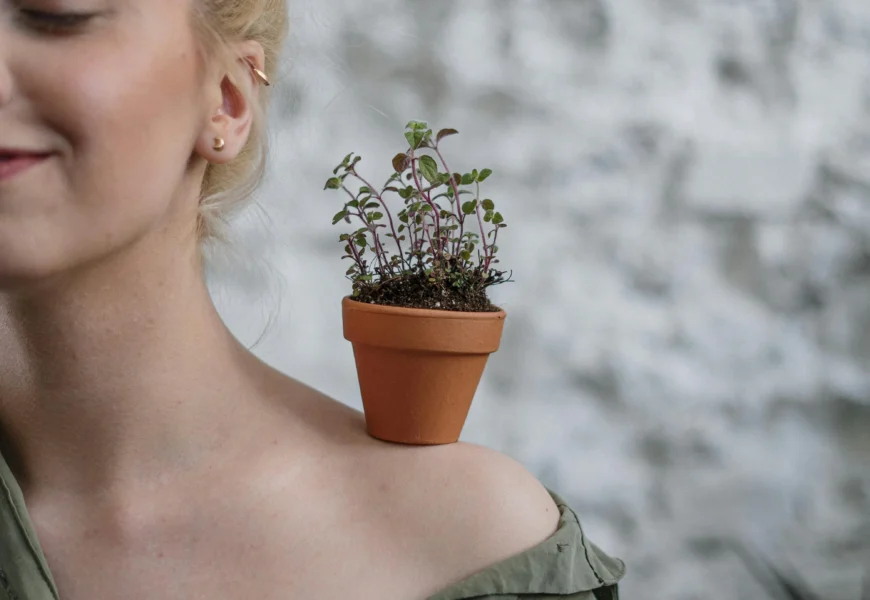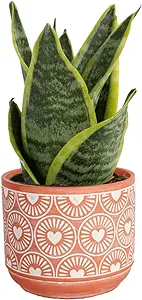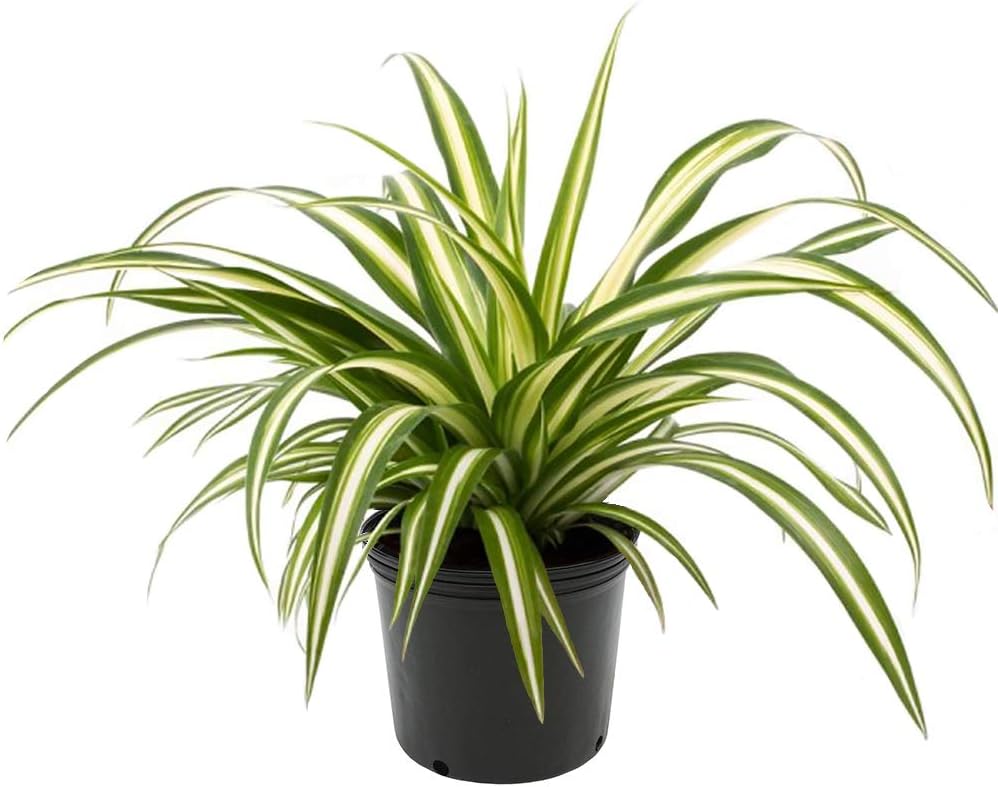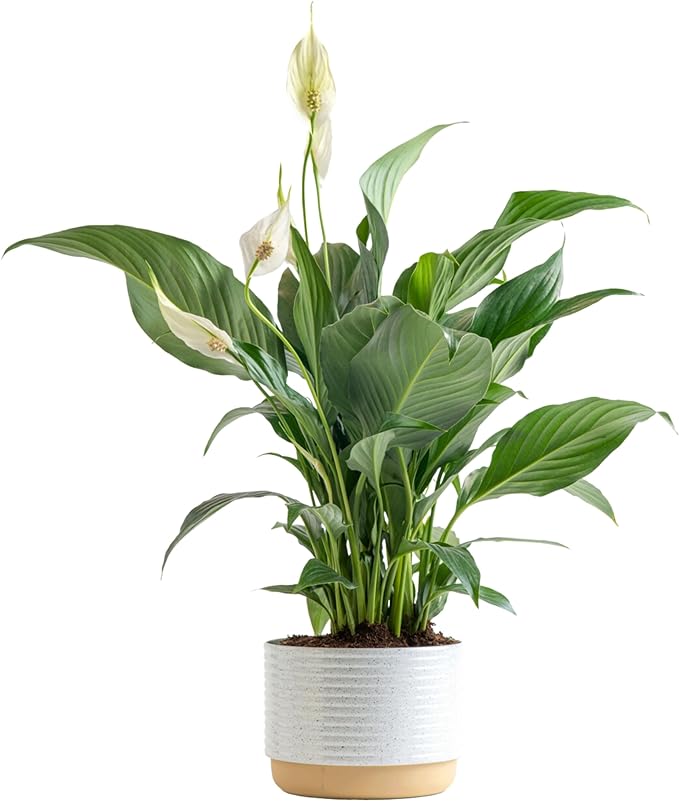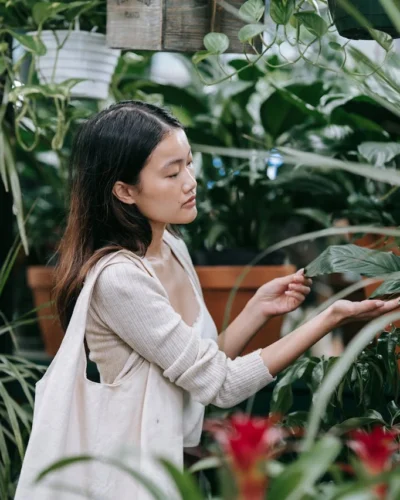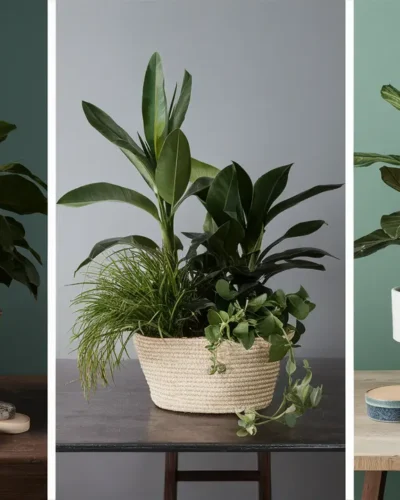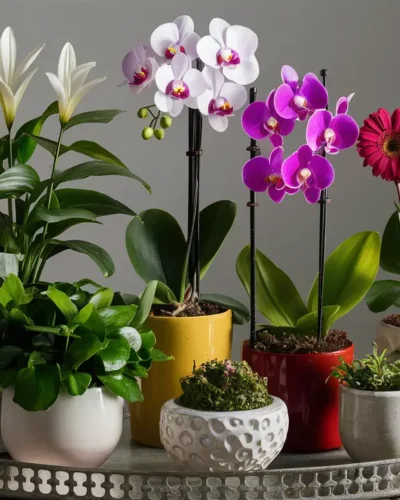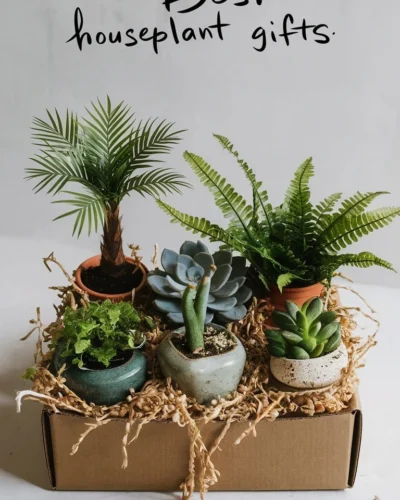Let’s face it, bringing a little green life indoors is a fantastic way to brighten your home and add a touch of tranquility. But choosing the right plants for your space and lifestyle can be overwhelming. This comprehensive guide showcases the best houseplants for beginners and it will take you from newbie plant parent to a seasoned green thumb, covering everything from low-maintenance picks to air-purifying powerhouses.
Table of Contents:
1. Indoor Plants
The journey to plant parenthood starts with understanding the fundamentals. Just like us, plants have needs. They crave the right mix of light, water, and nutrients. Think of it as an unspoken language, a botanical dialogue between you and your leafy companions.
Light: The Lifeblood of Your Plants
Light is the fundamental ingredient for photosynthesis, the process by which plants convert sunlight into energy. Without enough light, your plants will become etiolated – leggy and pale, stretching desperately towards a light source.
A simple trick: observe your plant’s leaves. If they’re turning yellow or pale, they’re probably not getting enough light.
Here’s the lowdown on light levels:
- Low Light: Perfect for rooms with minimal natural light, like bathrooms or hallways. Examples include Snake Plants and Cast Iron Plants.
- Medium Light: These plants thrive in rooms with bright, indirect light, like south-facing windows. Think of peace lilies, ZZ plants, and philodendrons.
- High Light: For the sun-lovers, these plants crave direct sunlight for at least a few hours a day. This includes succulents like cacti and aloe vera, and flowering plants like orchids.
Watering: The Art of Hydrating Your Plants
Watering is a delicate dance; too much water can lead to root rot, while too little will leave your plant parched. The best approach is to check the soil moisture before watering.
Here’s how:
- The Finger Test: Stick your finger into the soil about two inches deep. If it’s dry, your plant needs a drink.
- The Weight Test: Pick up the pot; a lightweight pot indicates a thirsty plant.
Remember, different plants have different needs. Some, like succulents, prefer to be watered sparingly, while others, like ferns, need more frequent hydration.
Soil: The Foundation of Your Plants
The soil provides the nutrients and structure that your plant needs to thrive. A well-draining, airy potting mix is key to preventing root rot.
Here’s what to look for:
- Potting Mix: A good potting mix is composed of a blend of materials like peat moss, compost, and perlite.
- Drainage: Make sure the potting mix allows for proper drainage, preventing soggy roots.
When repotting, consider adding some compost or organic matter to enrich the soil.
In the next installment, we’ll explore a curated selection of low-maintenance champions that are perfect for even the busiest plant enthusiasts.
And, be sure to check out these other articles to learn more about caring for your houseplants:
- Aphid Attack: How to Save Your Houseplants From These Pesky Bugs https://sproutfolk.com/aphid-attack-how-to-save-your-houseplants-from-these-pesky-bugs/
- Sticky Situation: Why Your Houseplants Are Getting Gooey https://sproutfolk.com/sticky-situation-why-your-houseplants-are-getting-gooey/
- Say Goodbye to Spider Mites: A Complete Guide to Saving Your Houseplants https://sproutfolk.com/say-goodbye-to-spider-mites-a-complete-guide-to-saving-your-houseplants/
Keep an eye out for the next part of this guide. We’ll unveil the secrets to cultivating healthy and happy houseplants!
2. Low-Maintenance Champions
Let’s face it, sometimes life gets busy. You might not always have time to fuss over your plants with daily watering and meticulous fertilization. That’s where these low-maintenance champions come in, saving you time and stress while still adding beauty to your home.
Snake Plant (Sansevieria trifasciata)
Liven up your home with the nearly indestructible Snake Plant!
This beauty is easy to care for, purifies your air, and comes in a decorative pot. Perfect for busy lives or anyone who struggles with plants!
This tough and resilient plant is known for its ability to thrive in neglect. It’s one of the common houseplants that can tolerate low light and infrequent watering. Its upright, sword-shaped leaves add a sculptural touch to any space.
- Light: Bright indirect light to low light.
- Watering: Water thoroughly when the soil is completely dry to the touch.
- Tip: Avoid overwatering, as this can lead to root rot.
ZZ Plant (Zamioculcas zamiifolia)
Another super-easy option is the ZZ Plant. This striking plant boasts dark, glossy leaves that create a lush feel. Like the Snake Plant, it’s incredibly tolerant of drought and can even handle some neglect.
- Light: Low to medium light.
- Watering: Water thoroughly when the soil is completely dry to the touch.
- Tip: Allow the soil to dry out completely between waterings.
Cast Iron Plant (Aspidistra elatior)
As its name suggests, the Cast Iron Plant is almost impossible to kill! It can tolerate low light, infrequent watering, and even some neglect.
- Light: Low light to medium light.
- Watering: Water thoroughly when the soil is dry to the touch.
- Tip: This plant prefers to be slightly dry than overwatered.
Spider Plant (Chlorophytum comosum)
Liven Up Your Space with the Easy-Care Spider Plant!
This beauty features cascading "spiderettes" and thrives in indirect sunlight.
Perfect for home or garden décor, it also purifies the air and is safe for pets!
Not only is the Spider Plant easy to care for, but it’s also incredibly easy to propagate. These plants are known for their “spiderettes,” or baby plants that grow on long, arching stems. These make excellent additions to your home or gifts for friends.
- Light: Bright indirect light to medium light.
- Watering: Water thoroughly when the soil is dry to the touch.
- Tip: Fertilize lightly every month during the growing season.
Remember, even though these common houseplants are low-maintenance, they still need some basic care to thrive. By providing them with the right amount of light and water, you can enjoy their beauty for years to come.
Looking for more tips on how to care for your common houseplants? Check out these articles:
3. Air-Purifying Powerhouses
You’ve brought life into your home with some beautiful plants, but did you know that some of them can actually clean the air you breathe? That’s right, certain common houseplants are natural air purifiers, working hard to remove toxins and pollutants from your indoor space.
Think of these green warriors as your very own air fresheners, but better. They don’t just mask unpleasant smells – they actually remove harmful substances like volatile organic compounds (VOCs), which can be released from things like paint, furniture, and cleaning products.
So, which common houseplants are the air-purifying heroes you need? Let’s dive in!
Top Air Purifying Plants:
- Peace Lily (Spathiphyllum): This elegant plant is known for its beautiful white flowers and its ability to remove ammonia, formaldehyde, and benzene from the air. If you’re looking for a low-maintenance, beautiful air purifier, this is a great choice. You can learn more about the common issues that can happen with peace lilies, like why your houseplants are getting gooey, on our website!
- Snake Plant (Sansevieria trifasciata): This tough and resilient plant can handle low light and infrequent watering, making it ideal for busy plant parents. It’s also a champion at removing formaldehyde, xylene, and toluene from the air.
- English Ivy (Hedera helix): This trailing vine is a great choice for hanging baskets or shelves. It’s a powerful air purifier, removing toxins like formaldehyde, benzene, and carbon monoxide. If you’re noticing aphid attack on your ivy, don’t worry, we’ve got you covered with tips on how to save your houseplants from these pesky bugs!
- Spider Plant (Chlorophytum comosum): Spider plants are known for their unique spiderettes, which are tiny plantlets that grow on long stems. These easy-to-care-for plants are also excellent at removing formaldehyde, xylene, and toluene from the air.
- ZZ Plant (Zamioculcas zamiifolia): This low-light loving plant is virtually indestructible, making it a great choice for beginners. It’s also effective at removing toxins like toluene and xylene from the air.
- Chinese Evergreen (Aglaonema): This vibrant plant comes in a variety of colors and patterns, adding a splash of beauty to your home. It’s also known for its ability to remove formaldehyde, benzene, and toluene from the air.
Bring home a beautiful Peace Lily to add a relaxing, calm feel to any space.
These houseplants are natural air purifiers that help keep your indoor air fresh and clean.
Easily fits tabletop, shelf, living room, office, or bedroom decor
Choosing the Right Air Purifiers for Your Space:
When selecting air-purifying plants, consider these factors:
- The size of your room: Larger plants will be more effective at purifying the air in larger spaces.
- Light levels: Make sure you choose plants that can thrive in the amount of light your room receives.
- Your personal style: Choose plants that you enjoy looking at and that complement your home décor.
Remember, even though these plants are natural air purifiers, they’re not a substitute for good ventilation. Open windows and doors regularly to allow fresh air to circulate.
4. Bringing the Outdoors In: Easy-to-Grow Tropicals
Tropical plants can bring a touch of the exotic to your home, transforming your living space into a lush, vibrant oasis. These plants are known for their dramatic foliage, stunning blooms, and the ability to create a sense of vacation-worthy tranquility. But don’t be fooled by their exotic aura – many tropical houseplants are surprisingly easy to care for.
Here are some of our favorites:
1. Snake Plant (Sansevieria trifasciata): This tough-as-nails plant can tolerate low light, infrequent watering, and even neglect. Its striking vertical leaves add a bold, modern touch to any room. You can find snake plants in a variety of shapes and sizes, from the classic, sword-like leaves to the more compact, variegated varieties. They’re a perfect choice for beginners or anyone looking for a low-maintenance, air-purifying plant.
2. ZZ Plant (Zamioculcas zamiifolia): Another incredibly resilient choice, the ZZ plant is a fantastic option for those who forget to water their plants regularly. Its dark, glossy leaves create a dramatic, tropical feel, and it’s known for its ability to thrive even in low-light conditions.
3. Peace Lily (Spathiphyllum): The peace lily’s elegant white blooms and lush, green foliage add a touch of sophistication to any space. They prefer bright, indirect light and a consistently moist soil. They also excel at purifying the air, removing harmful toxins like formaldehyde and benzene. Just be sure to keep them away from pets and children, as the leaves are toxic if ingested.
4. Philodendrons: Philodendrons are a popular choice for their striking, heart-shaped leaves and easy-going nature. They are available in a wide range of varieties, from the classic heartleaf philodendron to the more dramatic, variegated forms like the ‘Moonlight’ or ‘Pink Princess.’ These plants thrive in bright, indirect light and require regular watering. Make sure you are aware of the specifics of your plant’s care routine, however, as they vary between types.
5. Monstera deliciosa: This popular tropical plant is known for its large, dramatic leaves with unique, natural holes. Also known as the “Swiss Cheese Plant,” these plants thrive in bright, indirect light and prefer slightly moist soil. With their large, dramatic foliage, monsteras can add a touch of jungle vibes to any room.
These are just a few of the many easy-to-grow tropical houseplants that can bring the beauty of the outdoors into your home. If you’re looking for a more specific plant, it’s always a good idea to consult a knowledgeable plant expert or visit a local nursery for personalized recommendations. With a little bit of research and care, you can enjoy the beauty and benefits of tropical plants in your own home.
It’s important to remember that even though these plants are known for their resilience, they still require some basic care. Make sure to choose the right pot size, provide them with the appropriate light and water, and watch out for any signs of pests or diseases. If you’re struggling with pesky bugs, check out our guide on Aphid Attack: How to Save Your Houseplants From These Pesky Bugs. If you see any sticky residue on your plant, check out our article on Sticky Situation: Why Your Houseplants are Getting Gooey for more information.
With a little bit of care and attention, these beautiful plants will thrive in your home, bringing a touch of the tropics and a sense of tranquility to your everyday life.
5. Tips for Success: Caring for Your New Green Friends
Congratulations! You’ve brought home a new green friend. Now, let’s make sure they thrive in their new home. Remember, every plant is different, but here are some basic tips for success:
1. Know Your Plant’s Needs: Before you bring a new plant home, do some research. Learn about its light requirements, watering needs, and potential pest problems. Many resources are available online, such as this guide to saving your plants from spider mites! Say goodbye to spider mites – a complete guide to saving your houseplants
2. The Right Light: Many common houseplants thrive in bright, indirect light. Avoid placing them in direct sunlight, which can burn their leaves. If you’re unsure, you can always use a light meter to measure the intensity of the light in your home.
3. Water Wisely: Overwatering is one of the most common mistakes people make with houseplants. Allow the soil to dry out slightly between waterings, and then water thoroughly until water drains out of the drainage holes. You can also test the soil moisture with your finger to see if it’s dry.
4. Fertilize Regularly: Houseplants need nutrients to grow. Use a balanced fertilizer specifically designed for indoor plants. Follow the instructions on the label carefully.
5. Watch for Pests: Keep an eye out for common pests such as aphids, spider mites, and mealybugs. They can quickly multiply and damage your plants. Early detection is key! If you notice any pests, you can try using insecticidal soap or neem oil to control them.
6. Repot When Necessary: As your plants grow, they may need to be repotted into a larger pot. Repotting allows the roots to have more space to grow.
7. Be Patient: Don’t be discouraged if your plant doesn’t thrive immediately. It takes time for a plant to adjust to its new environment. Be patient and consistent with your care, and it will reward you with healthy growth.
Conclusion
Bringing a little bit of nature indoors is a rewarding experience. Remember, caring for your houseplants is like building a relationship. With some attention and understanding, you can create a beautiful and thriving indoor oasis. Keep exploring, and you’ll find a world of exciting and easy-to-care-for common houseplants to bring joy and vibrancy to your home. For example, you can find inspiration in this article about easy-to-grow tropicals.
Happy gardening!

